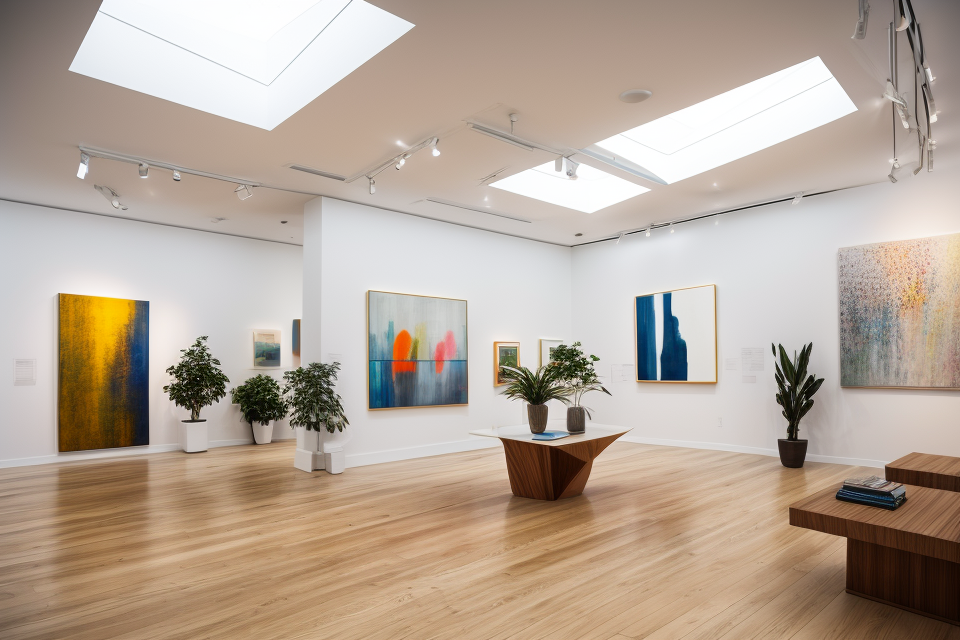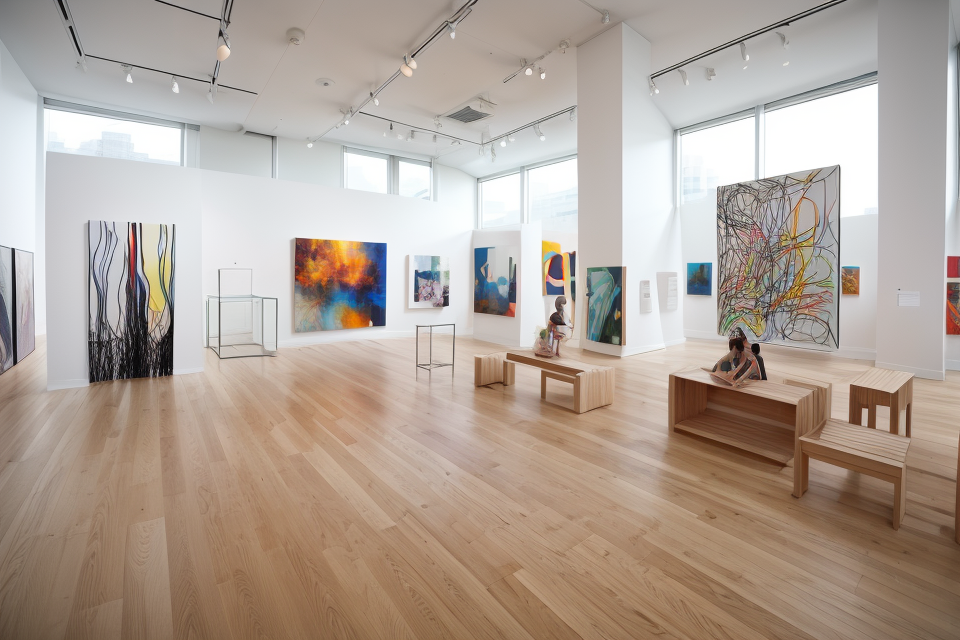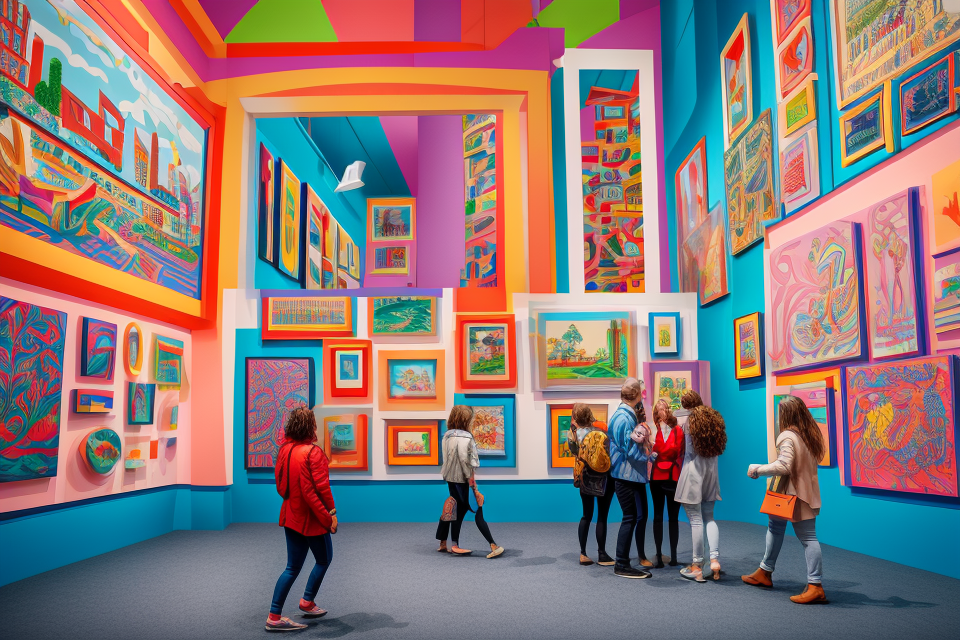Are you an artist contemplating whether to pay to exhibit your art? This is a crucial decision that can have a significant impact on your career. On one hand, exhibiting your art can provide you with valuable exposure and help you reach new audiences. On the other hand, the cost of exhibiting can be a major consideration, especially if you are just starting out. In this comprehensive guide, we will weigh the costs and benefits of exhibiting your art, so you can make an informed decision. We will cover topics such as the cost of entry fees, the potential return on investment, and the benefits of participating in art fairs and exhibitions. So, whether you are a seasoned artist or just starting out, this guide will provide you with the information you need to make the right decision for your career.
Should I Pay to Exhibit My Art?
Pros and Cons of Paying for Art Exhibitions
Pros
- Increased exposure and visibility: By paying to exhibit your art, you have the opportunity to showcase your work to a wider audience, including potential buyers, collectors, and industry professionals. This increased exposure can help you gain recognition and credibility as an artist, which can lead to further opportunities and career growth.
- Opportunities to network and collaborate with other artists and industry professionals: Art exhibitions often provide opportunities to meet and connect with other artists, curators, and industry professionals. These connections can lead to collaborations, future exhibitions, and other professional opportunities that can help advance your career.
- Potential for increased sales and career opportunities: Art exhibitions can also provide opportunities to sell your work, which can help you generate income and establish a market for your art. Additionally, exhibiting your art can help you gain recognition and credibility, which can lead to further career opportunities, such as commissions, residencies, and other opportunities.
Cons
- Financial investment required: Paying to exhibit your art requires a financial investment, which can be a significant burden for some artists. Depending on the exhibition, the costs can include entry fees, shipping and handling, insurance, and other expenses.
- Potential for rejection or lack of interest from galleries or audiences: Exhibiting your art also carries the risk of rejection or lack of interest from galleries or audiences. This can be discouraging and can impact your confidence and motivation as an artist.
- Possibility of overexposure or oversaturation in the market: Finally, exhibiting your art too frequently or in too many places can lead to overexposure or oversaturation in the market. This can make it difficult for your work to stand out and can actually harm your career in the long run.
Factors to Consider When Deciding to Pay for an Art Exhibition
When deciding whether to pay for an art exhibition, there are several factors to consider. Here are some of the most important ones:
Budget and Financial Resources
Evaluating personal financial resources and determining the feasibility of paying for an exhibition is a crucial factor to consider. This includes assessing the amount of money available for exhibition fees, as well as any additional costs associated with participating in the exhibition, such as transportation and insurance. It is important to carefully weigh the potential return on investment against the cost of participating in the exhibition.
Considering the potential return on investment and the long-term benefits of participating in an exhibition is also important. This includes assessing the potential impact of the exhibition on the artist’s career, as well as the potential for increased exposure and sales. It is important to carefully consider the potential benefits of participating in the exhibition and how they align with the artist’s overall goals and objectives.
Goals and Objectives
Identifying personal and professional goals for participating in an exhibition is an important factor to consider. This includes assessing whether the exhibition aligns with the artist’s vision and values, as well as the potential impact of the exhibition on the artist’s career. It is important to carefully consider the goals and objectives of participating in the exhibition and how they align with the artist’s overall vision and career aspirations.
Assessing the exhibition’s potential reach and impact on the artist’s career is also important. This includes researching the exhibition’s target market and audience, as well as assessing the potential for increased exposure and sales. It is important to carefully consider the potential reach and impact of the exhibition on the artist’s career and how it aligns with the artist’s overall goals and objectives.
Overall, deciding whether to pay for an art exhibition requires careful consideration of several factors, including budget and financial resources, goals and objectives, and potential reach and impact on the artist’s career. By carefully weighing these factors, artists can make informed decisions about whether to pay for an exhibition and how it aligns with their overall goals and objectives.
Other Ways to Exhibit Your Art
Alternatives to Paying for Exhibitions
Exhibiting your art doesn’t always have to involve paying for gallery space. There are many alternative options available to artists looking to showcase their work.
Art Fairs and Pop-Up Events
Art fairs and pop-up events are becoming increasingly popular as a way for artists to exhibit their work. These events often take place in non-traditional spaces, such as empty storefronts or temporary structures. They can be a great way to reach new audiences and gain exposure for your work. Many art fairs and pop-up events are free to attend, making them accessible to a wide range of people.
Collaborative Projects and Group Exhibitions
Collaborative projects and group exhibitions can be a great way to showcase your work while also working with other artists. These exhibitions often involve a theme or concept that brings the work of multiple artists together. They can be a great way to build connections with other artists and gain exposure for your work.
Online Platforms and Social Media
Online platforms and social media have become increasingly important for artists looking to exhibit their work. Websites such as Artsy and Saatchi Art provide online galleries for artists to showcase their work. Social media platforms such as Instagram and Facebook also provide artists with a way to connect with potential buyers and gain exposure for their work. Online exhibitions can be a great way to reach a wider audience and make your work accessible to people around the world.
Pros and Cons of Alternative Exhibition Opportunities
- Lower financial investment required: One of the main advantages of alternative exhibition opportunities is that they often require less financial investment than traditional gallery shows. This can be particularly appealing to artists who are just starting out or who have limited funds available for marketing and promotion.
- Increased flexibility and control over the exhibition process: With alternative exhibition opportunities, artists have more control over the exhibition process, from the selection of artwork to the layout of the space. This can be particularly appealing to artists who prefer a more hands-on approach to exhibition planning and management.
-
Access to new audiences and markets: Alternative exhibition opportunities can provide artists with access to new audiences and markets that may not be available through traditional gallery shows. For example, artists may be able to participate in exhibitions in other cities or countries, which can help to expand their reach and build their reputation as an artist.
-
Lower potential for exposure and credibility: One of the main drawbacks of alternative exhibition opportunities is that they may not provide the same level of exposure and credibility as traditional gallery shows. While alternative exhibition opportunities can be a great way to build a following and gain recognition, they may not be as effective at helping artists to establish themselves in the art world.
- Lack of networking and collaboration opportunities: Another potential drawback of alternative exhibition opportunities is that they may not provide the same level of networking and collaboration opportunities as traditional gallery shows. While alternative exhibition opportunities can be a great way to connect with other artists and industry professionals, they may not provide the same level of access to industry professionals and buyers as traditional gallery shows.
- Limited access to industry professionals and buyers: Finally, alternative exhibition opportunities may not provide the same level of access to industry professionals and buyers as traditional gallery shows. While alternative exhibition opportunities can be a great way to connect with other artists and industry professionals, they may not provide the same level of access to industry professionals and buyers as traditional gallery shows.
FAQs
1. What are the benefits of exhibiting my art?
Exhibiting your art can provide a number of benefits, including increased exposure for your work, the opportunity to network with other artists and industry professionals, and the chance to sell your art. Exhibitions can also help to build your reputation as an artist and increase your credibility in the art world.
2. What are the costs associated with exhibiting my art?
The costs associated with exhibiting your art can vary widely depending on the exhibition and the venue. Some common costs include entry fees, transportation and shipping costs, insurance, and any necessary equipment or materials. It’s important to carefully consider these costs and weigh them against the potential benefits of exhibiting your art.
3. Is it worth paying to exhibit my art?
It can be worth paying to exhibit your art if the exhibition offers significant benefits and exposure that would be difficult to achieve otherwise. However, it’s important to carefully consider the costs and weigh them against the potential benefits before deciding to pay to exhibit your art.
4. Are there any grants or funding options available to help cover the costs of exhibiting my art?
There may be grants or funding options available to help cover the costs of exhibiting your art. It’s a good idea to research and explore these options to see if they are a viable option for you. Some potential sources of funding include local arts councils, foundations, and government agencies.
5. What factors should I consider when deciding whether to pay to exhibit my art?
When deciding whether to pay to exhibit your art, it’s important to consider a number of factors, including the potential benefits of the exhibition, the costs involved, and any other opportunities that may be available to you. It’s also a good idea to consider your overall goals and objectives as an artist and how exhibiting your art may fit into those goals.



